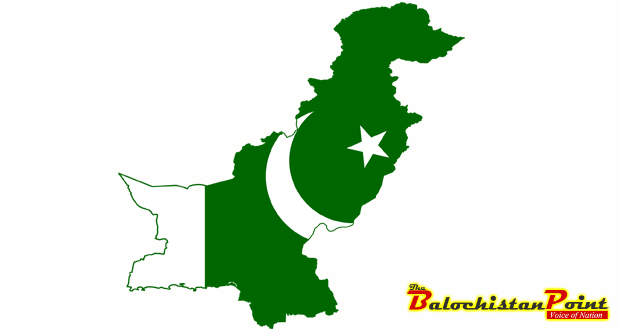Rehaan Baloch
This is the second article for two-part serious on this topic. Click Here to read the first part.
Notwithstanding, military rulers had left no stone unturned to marginalize and alienate the minor nationalities. They are considered to be real hurdle in the way of democracy and federalism. The traits of federalism and the democratic norms were put aside which ushered an era of authoritarianism and totalitarianism in Pakistan. Dictatorship tried to crush the regional sentiments and demands for autonomy by adopting the policy of ‘carrot and stick’. They never endeavored to integrate diverse nationalities and to bring all of them under one single unified and stable government. In fact, all their efforts were to suppress and subdue them to make their rule legitimate and easy. Ayubian dictatorial rule put forth no olive branch to assuage the regional affairs but also did nothing to diminish the yoke of ‘One Unit’ over the head of provinces which regional leaderships resented most. In the decision making process, the smaller provinces were totally disregarded and were excluded. Provinces were ruled from Islamabad rather than in the provinces which was against the true spirit of federalism and democracy. Ayub and its successors assumed a policy of ‘assimilation and elimination’. The process of bringing the small nations into the main stream had been very slow. It can only be possible by devolution and decentralization of powers through social mobility.
However, Bhutto era witnesses a change in the nature of Pakistani politics. Democracy and parliamentary form of government returned in Pakistan for the first time. ‘One Unit’ was dwindled, provincial autonomy was given, and efforts had undertaken to bring the marginalized nations in the mainstream politics. Bhutto was credited for drafting a consensus based constitution for Pakistan. Bhutto pledged to resolve all internal issues that Pakistan was confronting but failed to solve problems of the deprived provinces. Bhutto vowed that his rule would be of reconciliatory, participatory and of progressive government in Pakistan but unfortunately it appeared opposed to his predictions and promises. His optimism was replaced by repressive and authoritarianism. He kept the torch of authoritarianism and absolutism of his predecessors alive. Moreover, his half decade rule surpassed and left behind all the old dictators. Bhutto went two steps forward by centralizing all the powers in his own hand. No doubt, he insured provincial autonomy and agreed to devolve some powers to the regional government but all remained only intact in the pages of constitution. No practical and concrete steps were taken by Bhutto to cooperate with the provincial governments. Bhutto was a wolf in sheep clothing. He was not really a dictator but he used dictatorial powers.
Bhutto era had been considered as the turning point in the history of Pakistan. Many Baloch nationalists parted their ways from Pakistani politics and started a resistance movement. Bhutto denied and delayed their political and economic rights. Bhutto rule in Pakistan ushered a new episode of exploitation and suppression of small nationalities in spite of mutual collaboration and cooperation. Before Bhutto all the uprisings in Balochistan were just for autonomy and for the ending of ‘One Unit’ but later in late 1970s the dimensions and demand transformed into the command of a separate Greater Baluchistan. The rift widen between centre and federal government. No steps were taken to consolidate and shed an olive branch to the distressed Balochs but military had been used to crush them root and branch.
In addition, Bhutto dismissal of National Awami Party (NAP) government in Balochistan considered as the bone of contention between centre and provincial government. It was an anti democratic and unjust step taken by a popularly elected government to dismiss an elected provincial government without any justified cause. It was in fact, the biggest irony in the democratic political history of Pakistan. After the dismissal and during the NAP government centre- Balochistan confrontation had become a daily routine. Bhutto anti-sardari and anti nationalist mind-set brought ripples of frustration and irritation in the tribal cemented society of Balochistan. Bhutto’s reforms of modernization and nationalization were rejected by the NAP, considering them against the spirit of federalism and tribal oriented society. Bhutto put false and absurd allegations on Baloch nationalists in order to legitimize his army operation and crackdown against Baloch nationalists. The demand and struggle for provincial autonomy transformed into a resistance movement for self determination. Guerrilla warfare started in Balochistan because of centre exploitative ways to deal with the regional affairs.
Centralization of power proved to be a curse and provinces realized that without true federation and decentralization with maximum autonomy state cannot be retained, flourished and be sovereign. This centralization brought nothing but notion of provincialism and sense of deprivation that leads towards alienation between centre and provinces. Small provinces became victim of this centralization especially Balochistan especially Balochistan, Sindh, frontier and Bengal because all the policies whether that were regarding federal or regional dominated by Punjab with a high hand in centre. A strong federal government existence begets centrifugal forces rather than a sense of integration and unity. It is high time for the incumbent Nawaz government to include all the provinces in decision making whether it be regarding CPEC or foreign policy. Notwithstanding, unless and until 18th constitutional amendment and CCI are ensured effectively there would be fragile federalism.
(Concluded)
Published in The Balochistan Point on January 31, 2016
Disclaimer: Views expressed in this article are those of the author and The Balochistan Point not necessarily agrees with them.
 Balochistan Point Voice of Nation
Balochistan Point Voice of Nation




